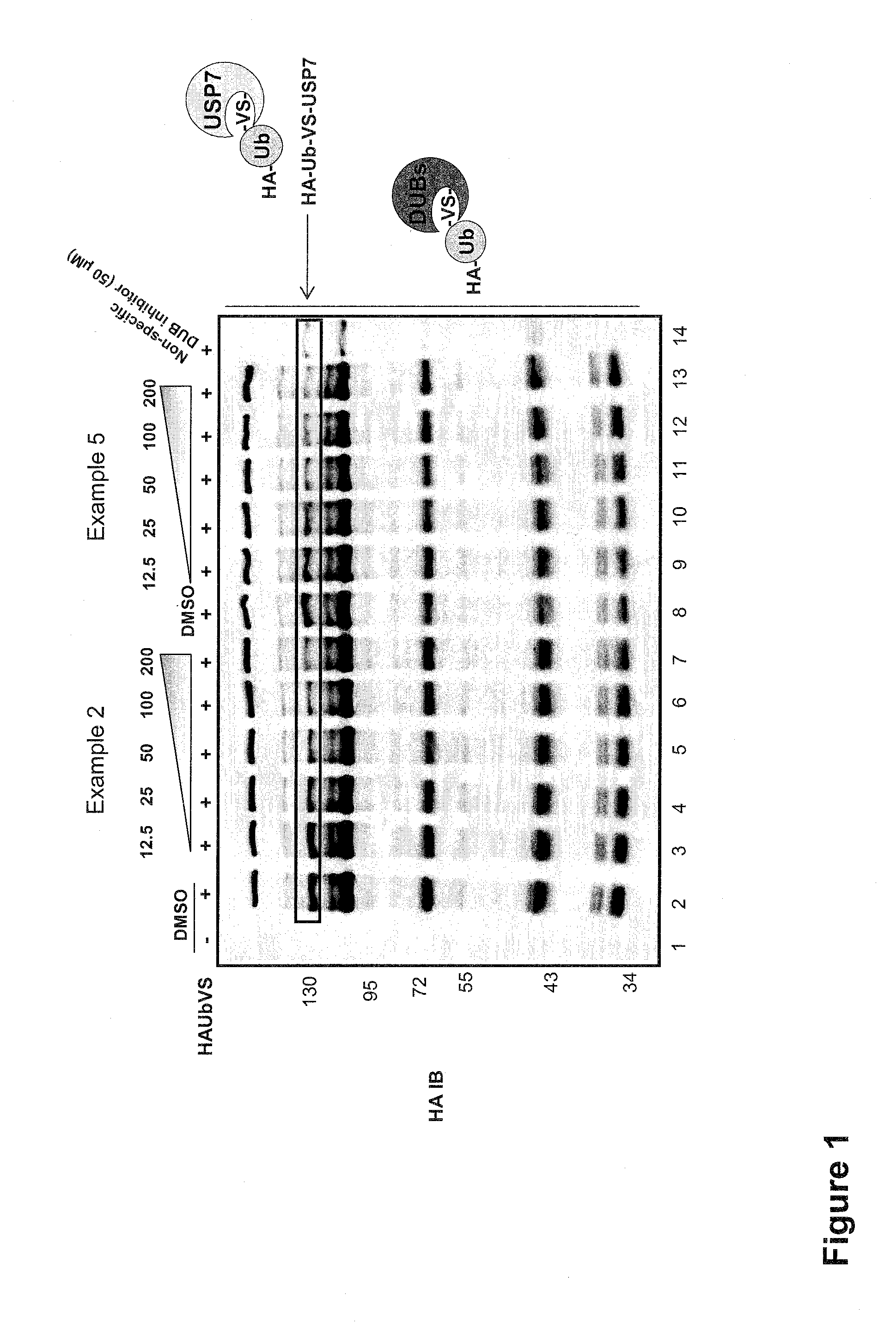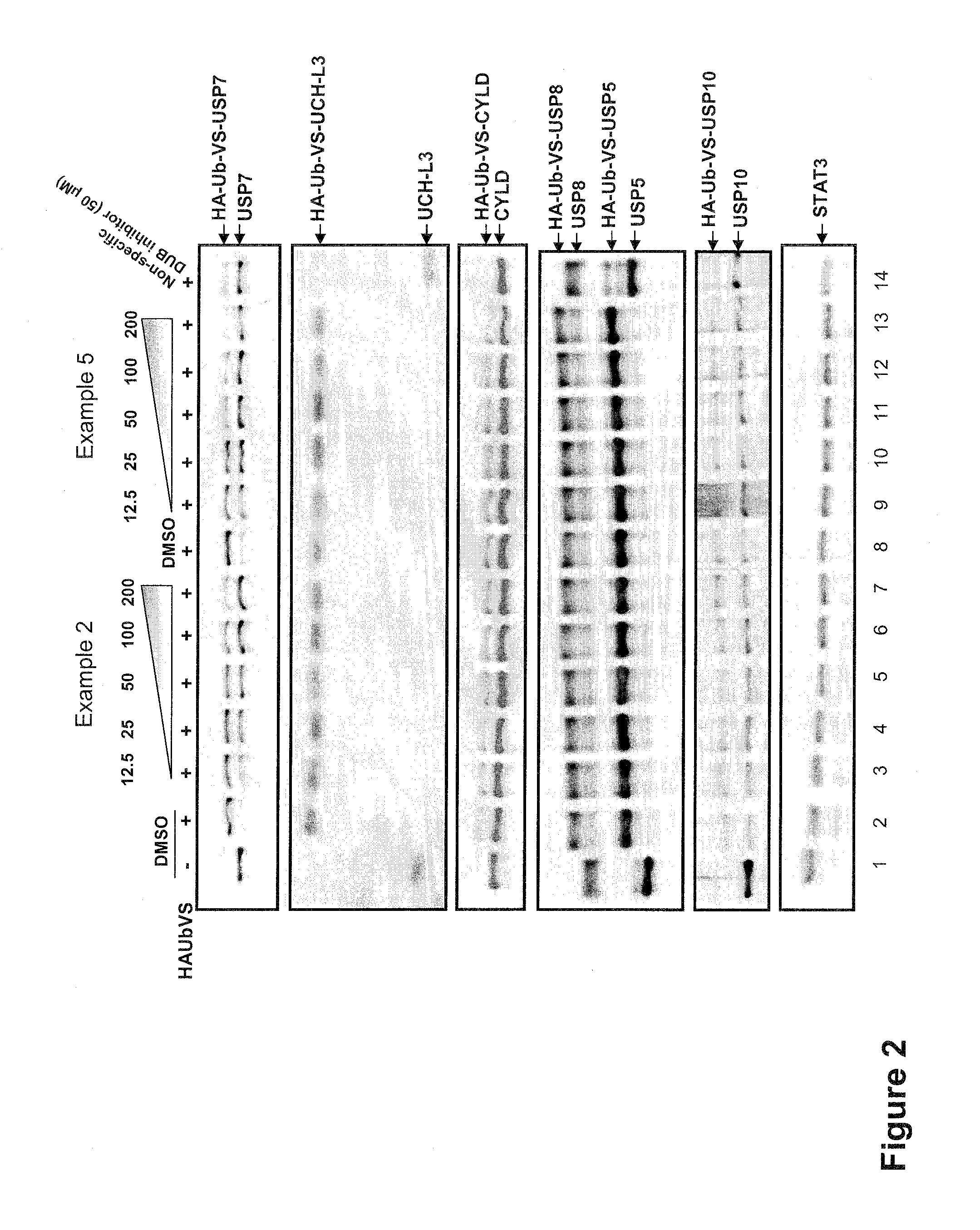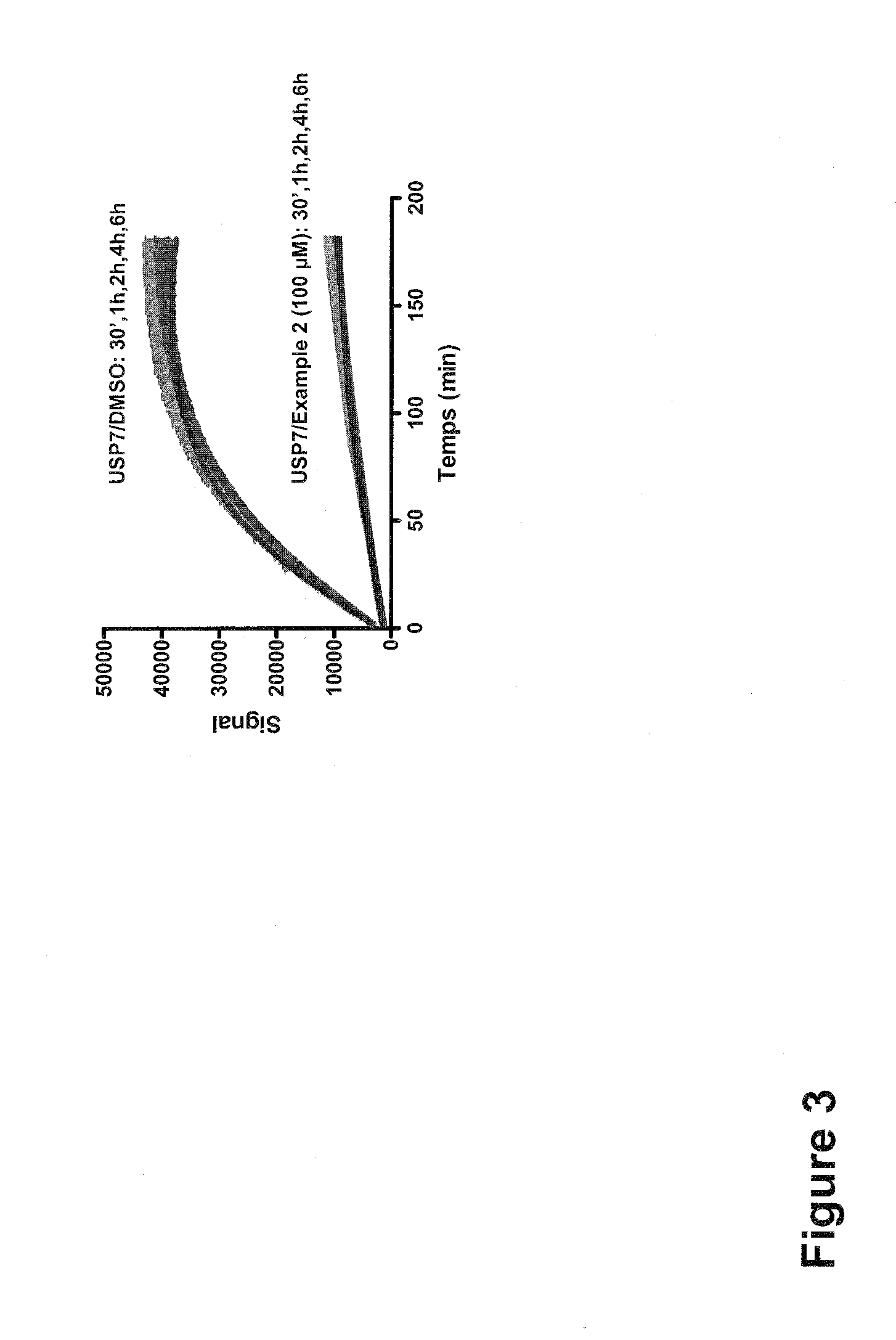Substituted quinazolin-4-ones for inhibiting ubiquitin specific protease 7
a protease 7 and quinazolin technology, applied in the direction of drug compositions, immunological disorders, metabolism disorders, etc., can solve the problem of not reporting specific and reversible usp7 small molecule inhibitors
- Summary
- Abstract
- Description
- Claims
- Application Information
AI Technical Summary
Benefits of technology
Problems solved by technology
Method used
Image
Examples
preparation of examples 1-14
[0266]
[0267]Compounds of formula (c) are obtained either from compound (b) via a Corey-Chaycovsky reaction as described in J. Amer. Chem. Soc. 1965, 87, 1353-1364 and WO2005054249 or either by epoxidation of the double bond of derivatives (b′). Compound (b) are commercially available or obtained from compound (a) after protection reactions well known in the art. The protecting group (PG) is for example benzyl (Bn), benzoyl (Bz), ter-butyloxycarbonyl (BOC) or Carbobenzyloxy (Cbz).
[0268]Oxirane (c) ring opening with quinazolinone (IV) is performed in the presence of a base like NaH, KF, K2CO3, Cs2CO3 when heating between 50 and 100° C. in dimethylformamide, acetone, etc. . . . .
[0269]Deprotection of the piperidine nitrogen is performed according to known methods gives compound (II).
[0270]Peptide coupling reaction are performed according to well known methods in the art between compound (II) and acid derivatives HO—C(O)—CH2(Z1)—CH2-D (compound III). For some examples conditions like ED...
example 1
3-{[4-hydroxy-1-(3-phenylpropanoyl)piperidin-4-yl]methyl}-3,4-dihydroquinazolin-4-one
Step 1: Preparation of tert-butyl 1-oxa-6-azaspiro[2.5]octane-6-carboxylate
[0287]To a stirred solution of 1-Boc-4-piperidone (6.1 g, 30.6 mmol, 1 eq) in tetrahydrofuran (200 mL) was added trimethylsulfoxonium iodide (6.8 g, 30.6 mmol, 1 eq) and potassium tert-butoxide (4.0 g, 30.6 mmol, leg). The mixture was refluxed for 18 h and concentrated in vacuo. The crude product was dissolved in AcOEt (100 mL), and washed with water (100 mL). The layers were separated, and the aqueous layer was extracted with AcOEt. The combined organic extracts were dried over Na2SO4, filtered and concentrated in vacuo. The solid was purified by flash column chromatography on silica gel (eluent: cyclohexane / ethyl acetate 9 / 1) to give compound tert-butyl 1-oxa-6-azaspiro[2.5]octane-6-carboxylate (3.3 g, 52%) as a white solid.
Step 2: Preparation of tert-butyl 4-hydroxy-4-[(4-oxo-3,4-dihydroquinazolin-3-yl)methyl]piperidine-1-...
example 5
3-({4-hydroxy-1-[2-methyl-3-(thiophen-2-yl)propanoyl]piperidin-4-yl}methyl)-3,4-dihydroquinazolin-4-one
[0296]To a solution of the TFA salt from step 3 of example 1 (0.42 mmol, 1 eq) in CH2Cl2 (10 mL) was added successively DIEA (0.37 mL, 2.12 mmol, 5 eq), 2-Methyl-3-(2-thienyl)propanoic acid (71 mg, 0.42 mmol, 1 eq, Organometallics, 2002, 21, 2842), EDCl (161 mg, 0.84 mmol, 2 eq) and HOBt (114 mg, 0.84 mmol, 2 eq). The reaction mixture was stirred at room temperature overnight and then concentrated in vacuo. The crude product was purified by flash column chromatography on silica gel (eluent: cyclohexane / ethyl acetate from 2 / 8 to 0 / 10 then ethyl acetate / MeOH 9 / 1). A second purification by column chromatography was performed using the same conditions to give, after solvent evaporation and drying under high vacuum Example 5 (117 mg, 68%) as a white solid.
[0297]MS (ES+, mz): 412.2 [M+H]+
[0298]1H NMR (DMSO-d6) δ: 8.24 (s, 1H), 8.17 (m, 1H), 7.84 (m, 1H), 7.70 (m, 1H), 7.56 (m, 1H), 7.27 ...
PUM
| Property | Measurement | Unit |
|---|---|---|
| temperature | aaaaa | aaaaa |
| temperature | aaaaa | aaaaa |
| temperature | aaaaa | aaaaa |
Abstract
Description
Claims
Application Information
 Login to View More
Login to View More - R&D
- Intellectual Property
- Life Sciences
- Materials
- Tech Scout
- Unparalleled Data Quality
- Higher Quality Content
- 60% Fewer Hallucinations
Browse by: Latest US Patents, China's latest patents, Technical Efficacy Thesaurus, Application Domain, Technology Topic, Popular Technical Reports.
© 2025 PatSnap. All rights reserved.Legal|Privacy policy|Modern Slavery Act Transparency Statement|Sitemap|About US| Contact US: help@patsnap.com



